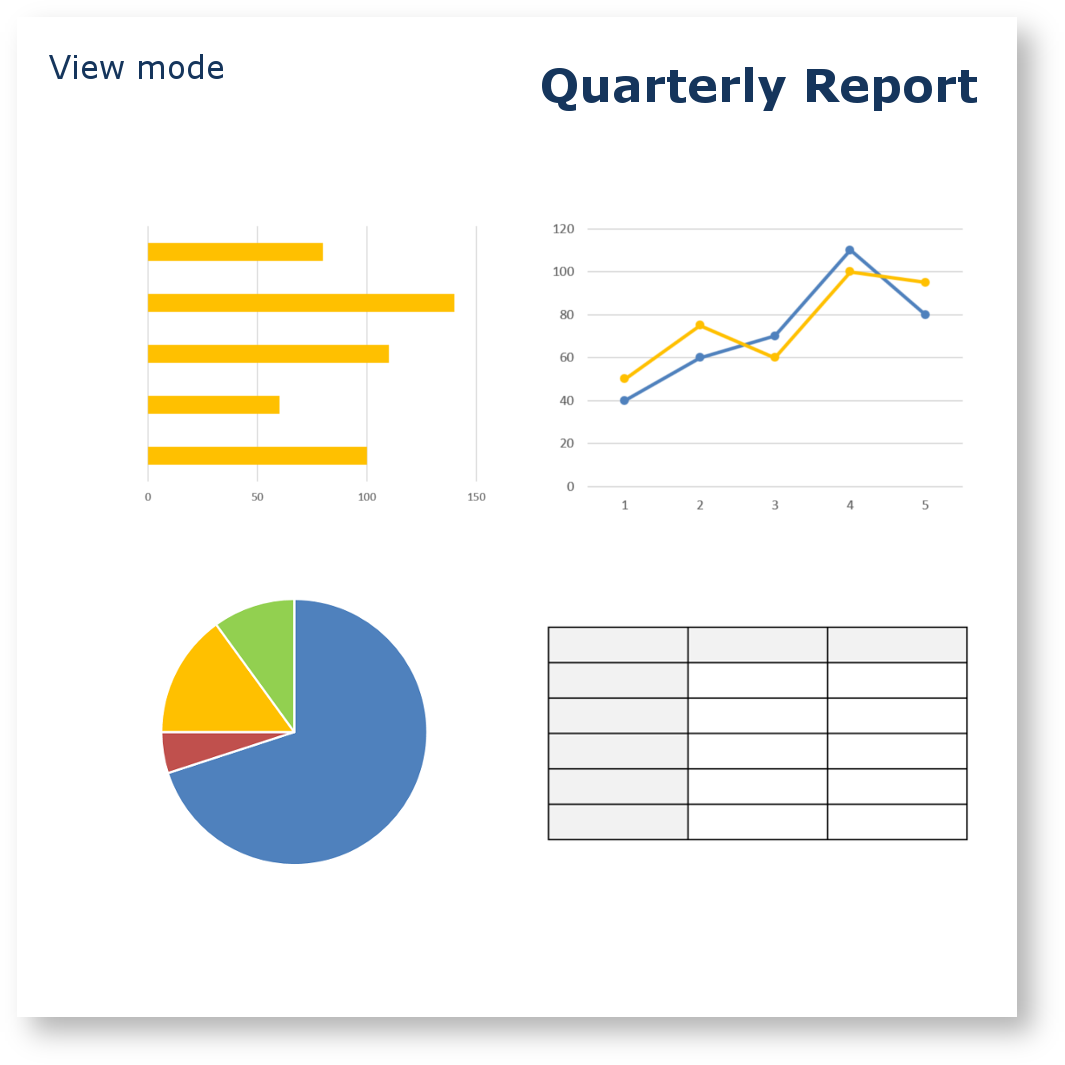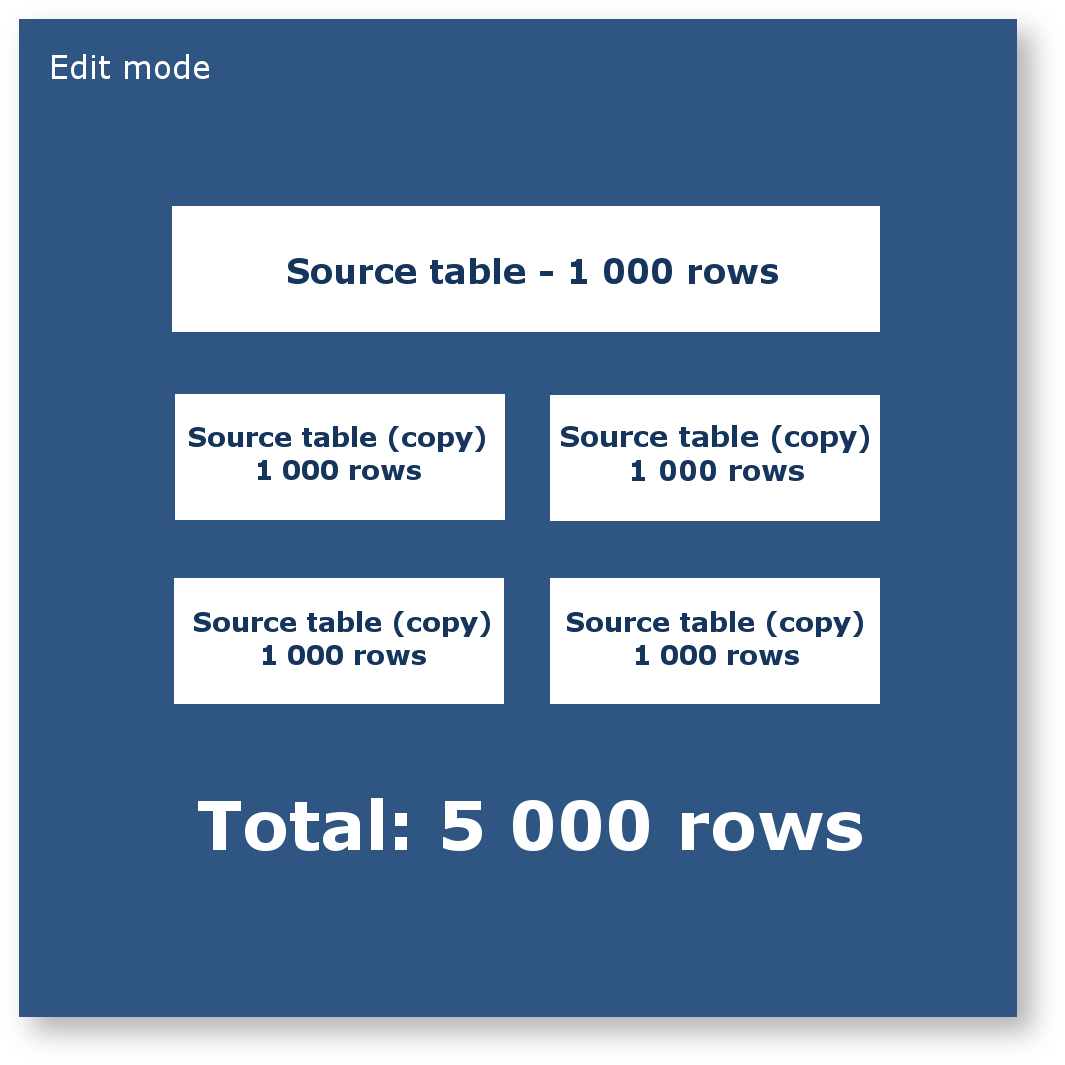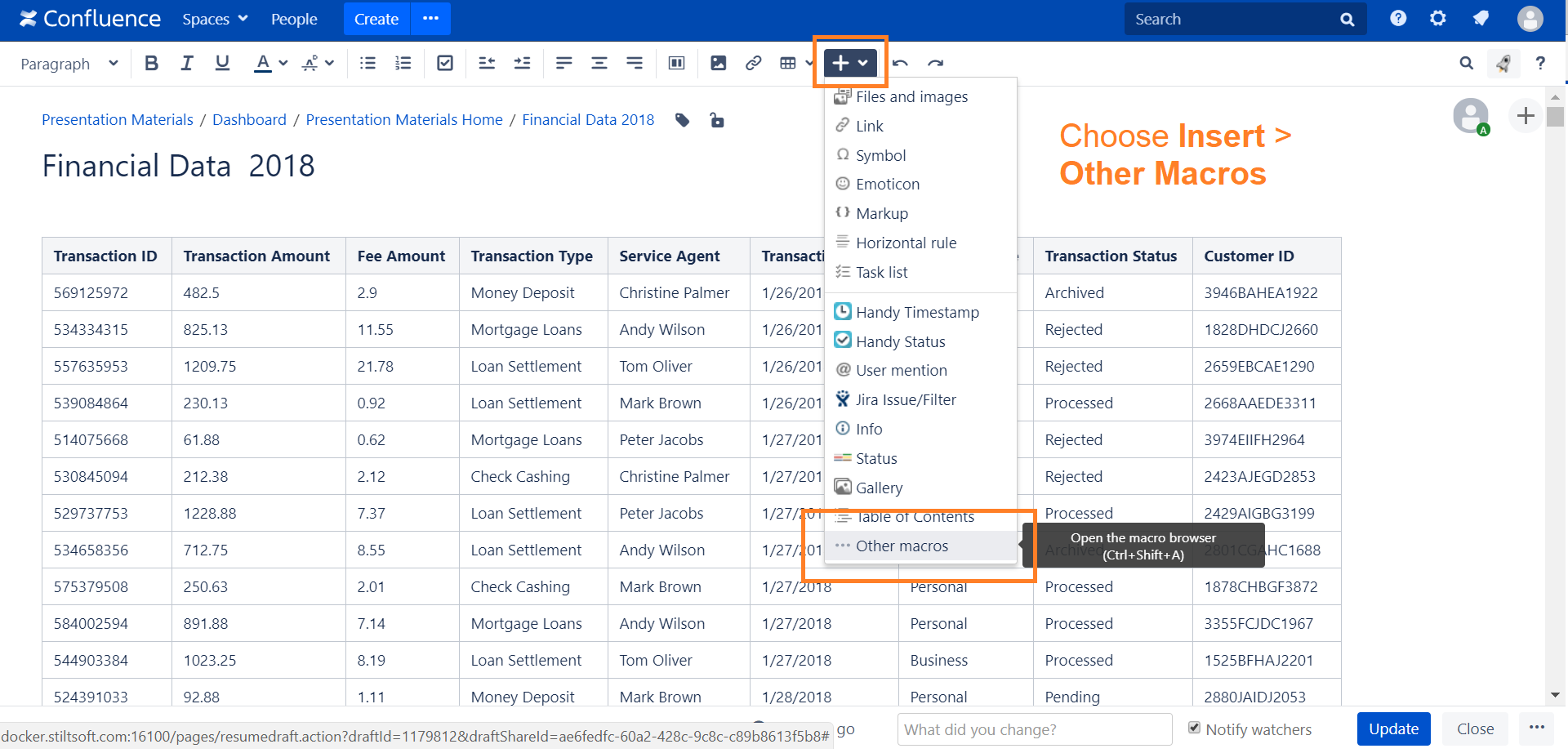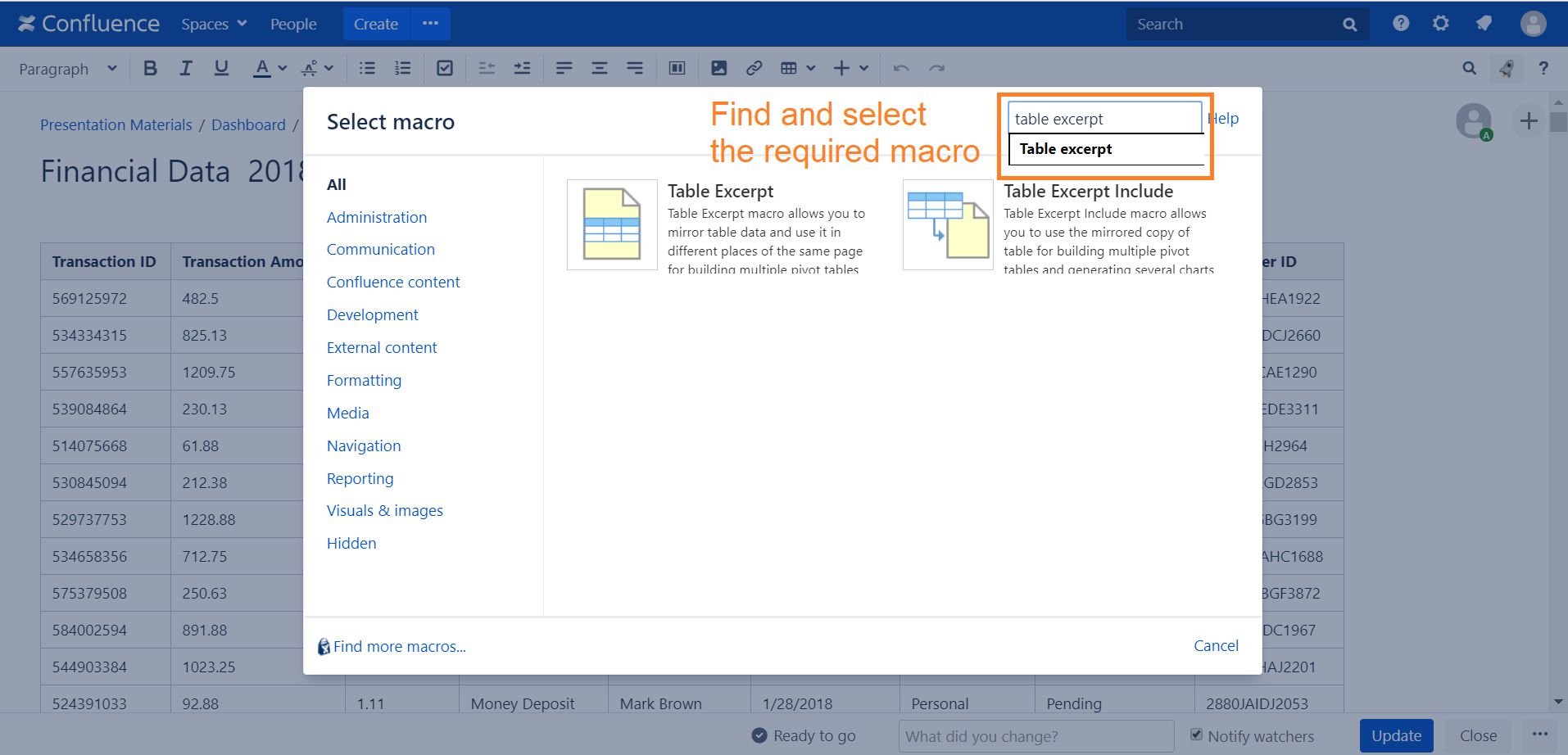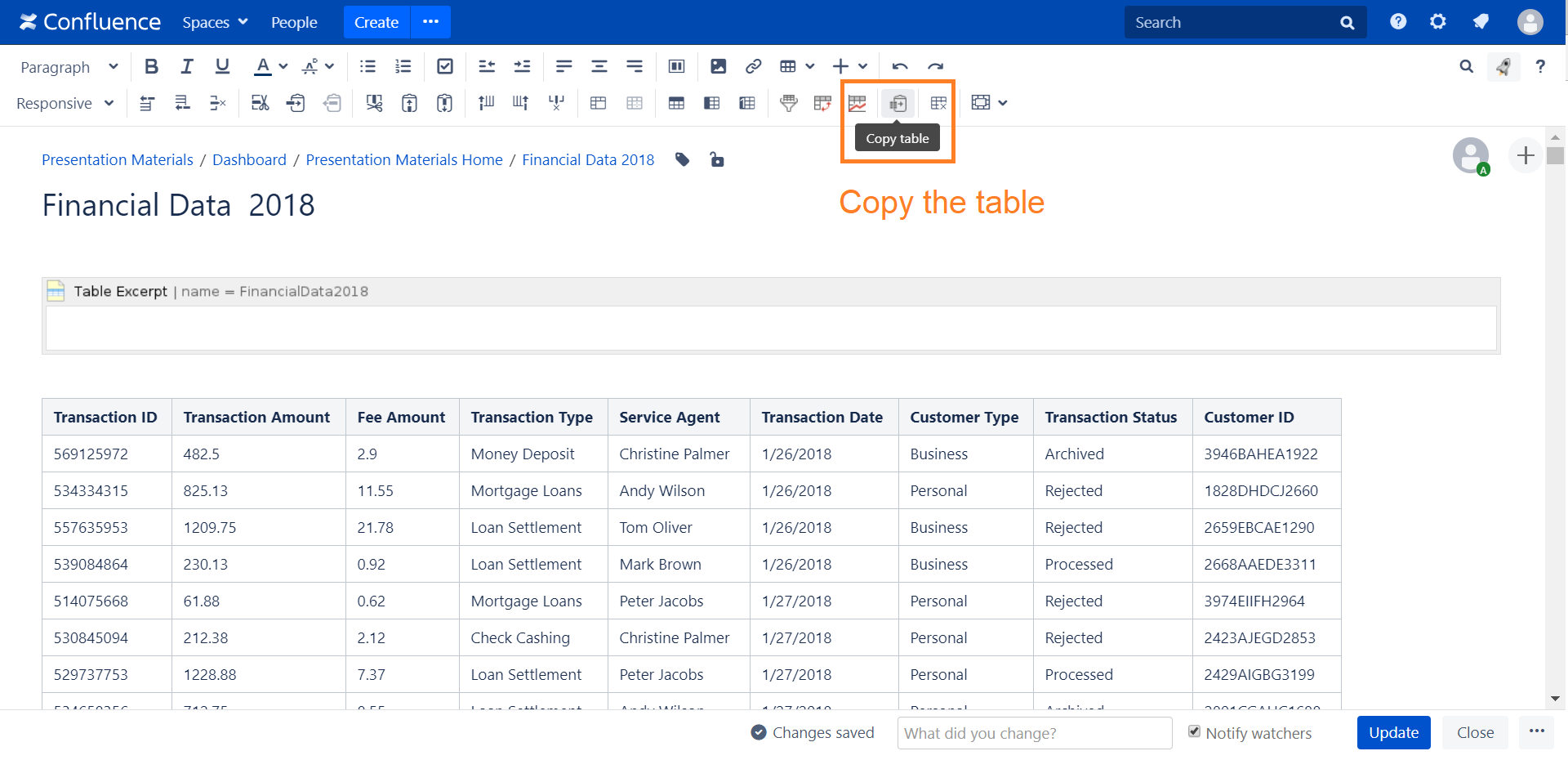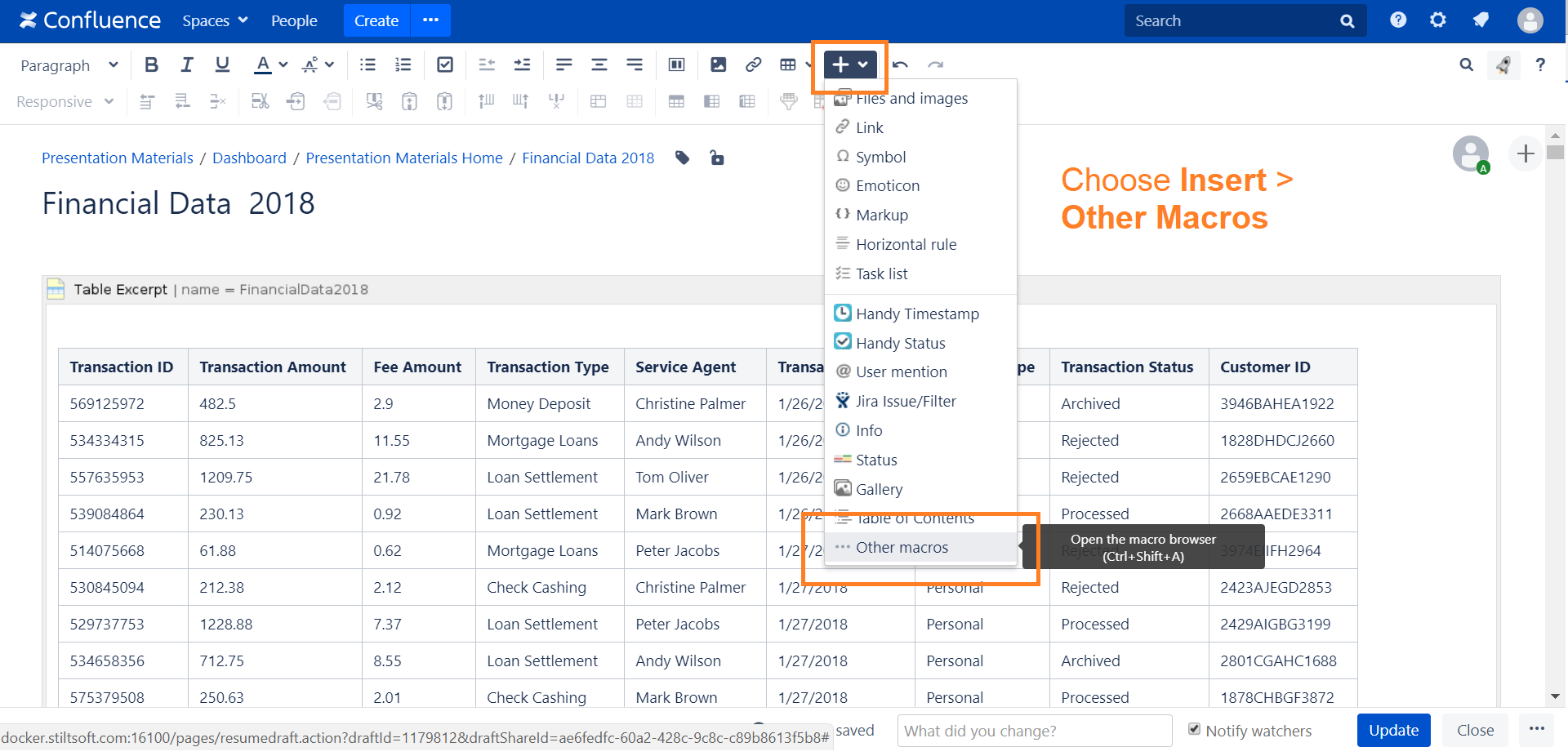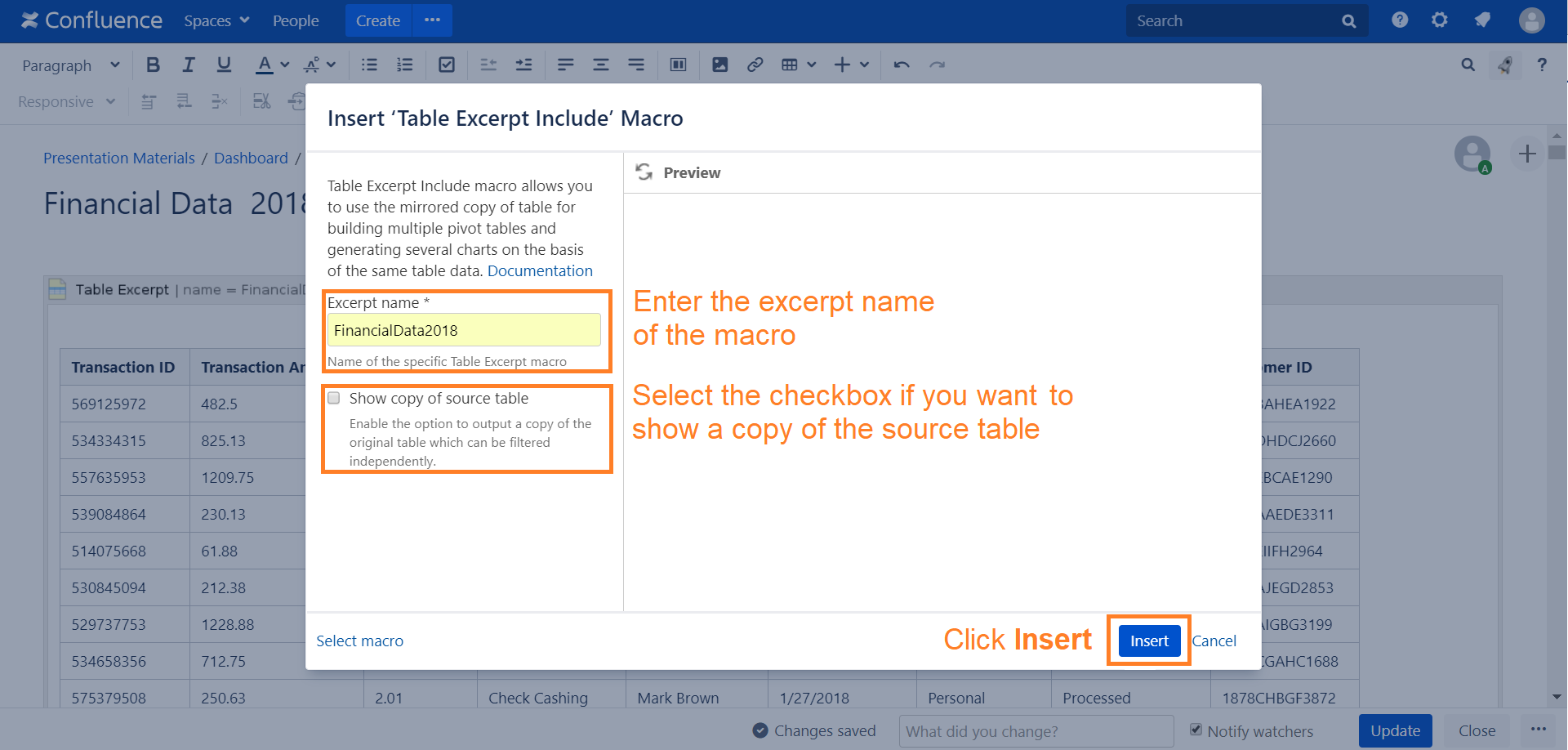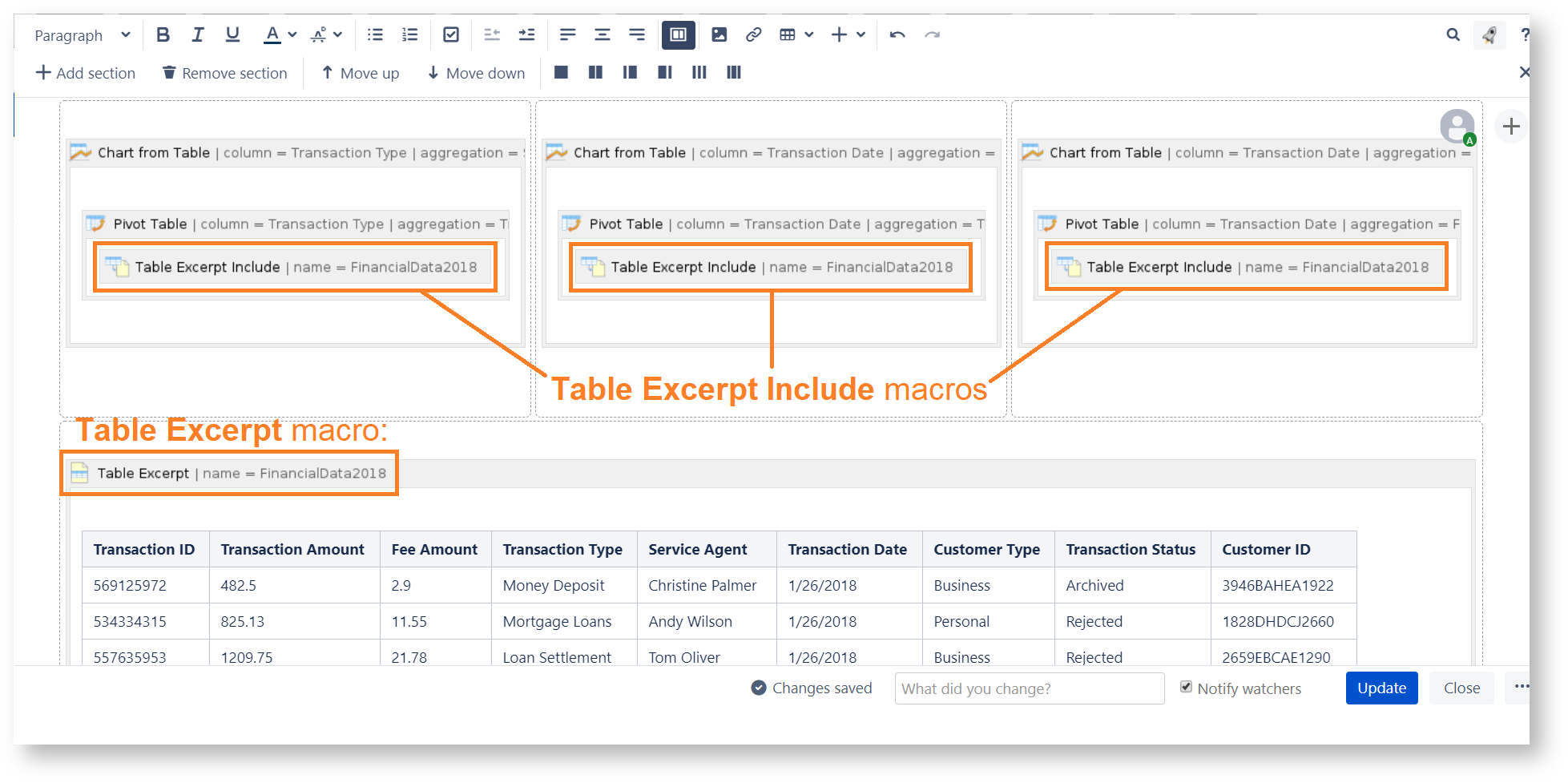| Panel |
|---|
The Table Excerpt and Table Excerpt Include macros were designed to improve the performance and response of pages storing large tables. You can work with the original table for dynamic filtering and building several pivot tables or charts on its basis. You can use the macros both within one page and within several pages of your Confluence instance. |
The macros are available in Confluence Server only.
The main objectives of using the macros are:
- providing dynamic changing of content, based on tables when the source tables changing;
Talk id talk-4055 Talk id talk-4056 - avoiding loss of productivity when working with large tables (compared to multiple copies of the table within one page);
- comfort to operate in the edit mode, when there is only one large table with the small macros instead of multiple large tables.
| Widget Connector | ||||||
|---|---|---|---|---|---|---|
|
And actually, why should I use these macros?
When you build multiple pivot tables and charts from table ➜
Multiple copies of a large source table cause reducing of processing speed ➜
Inserting references to a source table with the Table Excerpt/Table Excerpt Include macros leads to continued productivity.
| Table of Contents | ||||
|---|---|---|---|---|
|
Using the Table Excerpt Macro
Adding the Table Excerpt macro to a page:
- In the Confluence editor, choose Insert > Other Macros.
- Find and select the required macro.
- Enter the unique identifier for the macro.
- Click Insert.
| Tip |
|---|
You will be able to reference the marked table by inserting the Table Excerpt Include macro (on the same page only) and entering the specified unique name. |
| Tip |
|---|
Speeding up macro entry with autocomplete: type { and the beginning of the macro name 'Table Excerpt", to see a list of suggested macros. Select the Table Excerpt macro from the prompted results. |
Adding a Table into the Table Excerpt Macro:
- Copy (cut) a table.
- Paste the table into the Table Excerpt macro placeholder.
| Handy Carousel | ||||
|---|---|---|---|---|
| ||||
Using the Table Excerpt Include Macro
Adding the Table Excerpt Include Macro to a Page and Specify the Settings:
- In the Confluence editor, choose Insert > Other Macros.
- Find and select the required macro.
- Enter the excerpt name of the macro.
- Set the Search for excerpt on option to define the pages containing the Table Excerpt macro:
- Current page
- Another page (specify the page title)
- Page and childpages (specify the page title)
- Page and all decsendants (specify the page title)
- Pages with labels (specify the page labels and the space) - If you choose the Current page option, select the Show copy of source table checkbox in case you want to show a copy of a source table in the page view mode. In other cases the table always is displayed.
- Click Insert.
| Tip |
|---|
Speeding up macro entry with autocomplete: type { and the beginning of the macro name 'Table Excerpt Include', to see a list of suggested macros. Select the Table Excerpt Include macro from the prompted results. |
| Tip |
|---|
You can use the Table Excerpt Include macro without showing the source table within the Pivot Table macro and the Chart from Table macro because a pivot table and a chart can be built without displaying a source table. On the other hand, if you want to use the Table Excerpt Include macro within the Table Filter macro you should select the "Show copy of source table" checkbox because this macro requires a table for its correct work. |
| Handy Carousel | ||||
|---|---|---|---|---|
| ||||
Using the Same Table for Generating Multiple Charts
- Insert the Table Excerpt macro and place the source table into the macro body according to the instructions above.
- Insert the Table Excerpt Include macro according to the instructions above and place it into the Pivot Table or Chart from Table macros or their combination.
- Adjust the parameters of the pivot tables and charts.
- Save the page.
As the result, you will receive multiple charts generated on the basis of the same data table.
